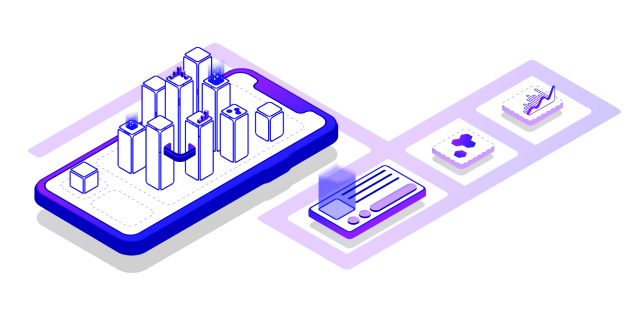Short version: 2026 is the year NFT regulation stops being “guidance to prepare for” and becomes a set of hard operational requirements. In the EU, crypto-asset tax reporting (DAC8) goes live and MiCA’s transition period ends. In the UK, CARF kicks in. In the U.S., the IRS expands broker reporting for digital assets (including basis and gain/loss). Globally, countries that adopted the OECD’s CARF collect 2026 data and start exchanging it in 2027. If you’re planning or operating a platform, consider aligning early with NFT marketplace development practices so compliance is baked into product architecture.
Starting January 1, 2026, the EU’s updated crypto tax transparency regime DAC8 applies. For in-scope providers (often referred to as RCASPs), this means full collection of client and transaction data for the 2026 tax year, followed by automatic information exchange in 2027. In practice, you’ll need standardized customer and asset master data, accurate residency flags, consent language for data processing, and robust amendment/re-file procedures. Even if your product is purely utility NFTs (no investment pitch), DAC8 focuses on service providers operating for EU clients—not just on whether a token is “financial.”
In parallel, a second deadline arrives. From July 1, 2026, the MiCA transition period ends for firms operating under national permissions that were valid until late 2024. After that date, only fully authorized CASPs may offer crypto-asset services in the EU. For NFT marketplaces and custodial services this is not a box-ticking exercise: you need production-grade information security, risk management, AML/CTF procedures, operating policies, and capital requirements that match MiCA. One more nuance: if your NFT model stops being genuinely “unique” and drifts toward pseudo-fungibility (large runs, fractionalization, identical economics), your risk of falling under MiCA’s fungible-asset perimeter rises—see our deep dive on dynamic NFTs for how collection structure can affect classification.

In the UK, January 1, 2026 is the go-live for HMRC’s implementation of CARF. Functionally similar to global CARF, but with UK specifics: determine if you are a UK-RCASP, adapt onboarding to capture a client’s tax status, residency, and identifiers, and prepare 2026 data files to be submitted in 2027. If you’re already active in the EU, it’s efficient to build a single data layer aligning DAC8 and UK CARF fields—so you don’t maintain two divergent pipelines.
In the US, securities treatment for NFTs remains case-by-case, but tax reporting dominates 2026. The IRS is rolling out the new Form 1099-DA for digital asset brokers. Brokers already report gross proceeds for transactions from January 1, 2025 (forms filed in 2026). From January 1, 2026, coverage expands to cost basis and gain/loss for covered sales. Custodial platforms and hosted wallets must enable TIN matching, accurate basis calculations, rules for corporate actions, and coordinate export formats with reporting vendors. On the client side, expect a 1099-DA that shows not only “how much you sold for,” but also “what you earned or lost.”
The OECD CARF sets a global direction: collect data for 2026, and first cross-border exchanges happen in 2027 for most participating jurisdictions. If your user base is international, map your customer countries against the CARF participants; a single transaction might trigger DAC8, UK CARF, and global CARF reporting. You don’t need to drop markets, but you do need a unified master-data model.
First, NFT regulation in 2026 is no longer a “future risk” it’s about tax and licensing operations. If you’re a marketplace, a custodial provider, or an issuer serving the EU/UK/US, you’ll have formal duties: reliable client identification and tax status, basis computation, and on-time submissions in the required formats. The creative nature of NFTs—access passes, memberships, tickets, in-game utility doesn’t change the fact that reporting hinges on the service provider perimeter. For practical patterns, review our NFT marketplace development approach to KYC/AML, custody, and audit trails.
Second, MiCA raises the bar. CASP authorization isn’t “get a license and forget it.” It reshapes your InfoSec and event logging, incident response, resilience testing, conflicts-of-interest policies, staff training, and independent control lines. If you’re operating under a “national transition” today, you have less than a year to meet the full mark.
Third, data becomes part of the product. To comply with DAC8 / UK CARF / OECD CARF and 1099-DA, you need a single data layer: standardized client IDs and residency status, an asset classifier (including NFT flags), events that affect basis, and amendment workflows. The smoothest path is compliance by design plan, required fields, and documents alongside your feature roadmap. Finally, don’t overlook consumer rights and refunds. When NFTs function as tickets or access rights, you still face distance-selling rules, disclosure duties, and refund logic in certain jurisdictions. For patterns and pitfalls, check NFT ticketing (consumer rights & refunds), it’s a practical lens on how to align user promises, terms, and support workflows with regulation.
2027 will bring the first large-scale data exchanges tax authorities will stress-test your 2026 data quality, from onboarding to amendment SLAs. Expect technical standard refinements and quality checks in the EU and UK; in the U.S., the IRS typically broadens coverage over time, so temporary reliefs may phase out.
On the narrow NFT regulation front (investment vs. non-investment), no sudden flips are expected, but practice will refine the edges: how to treat big “unique” collections with identical economics; when marketing crosses into “expectation of profit”; and how IP law balances with artistic expression. Projects with transparent utility, clean IP rights, and compliant advertising tend to sleep better.
In 2026, NFT regulation moves from “watch the headlines” to product architecture and operating processes. Winning teams do three things now:
While 2026 brings formal obligations, it also brings clarity. The shift from vague guidance to structured reporting means fewer surprises and more predictable compliance paths. If you’re building with transparency, utility, and clean data flows, regulation becomes a framework—not a threat. Most NFT projects won’t need to reinvent themselves; they’ll need to document what they already do well. With the right data layer and proactive onboarding, tax reporting becomes a feature, not a fire drill.
ND Labs covers both development and compliance: we run readiness audits, stand-up reporting, and get you MiCA-ready.
